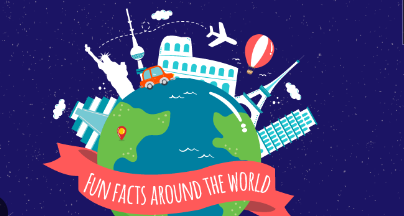This paragraph serves as an introduction to your blog post. Begin by discussing the primary theme or topic that you plan to cover, ensuring it captures the reader’s interest from the very first sentence. Share a brief overview that highlights why this topic is important and how it can provide value. Use this space to set the tone for the rest of the article, preparing readers for the journey ahead. Keep your language approachable, yet informative, to create a strong connection. World Cultures
Sometimes, the simplest moments hold the deepest wisdom. Let your thoughts settle, and clarity will find you. Use this quote space to share something inspirational or reflective, perfectly aligned with the theme of your article.
This paragraph dives deeper into the topic introduced earlier, expanding on the main idea with examples, analysis, or additional context. Use this section to elaborate on specific points, ensuring that each sentence builds on the last to maintain a cohesive flow. You can include data, anecdotes, or expert opinions to reinforce your claims. Keep your language concise but descriptive enough to keep readers engaged. This is where the substance of your article begins to take shape.

As you move toward the midpoint of the article, this paragraph provides an opportunity to connect earlier ideas with new insights. Use this space to present alternative perspectives or address potential questions readers might have. Strike a balance between depth and readability, ensuring the information remains digestible. This section can also serve as a transition to the closing points, maintaining momentum as you steer the discussion to its final stages. World Cultures
Wrapping Up with Key Insights
In this concluding paragraph, summarize the key takeaways from your article, reinforcing the most important ideas discussed. Encourage readers to reflect on the insights shared or offer actionable advice they can apply in their own lives. This is your chance to leave a lasting impression, so make sure your closing thoughts are impactful and memorable. A strong conclusion not only ties the article together but also inspires readers to engage further. World Cultures
1. The Maasai People Measure Wealth in Cattle
In Kenya and Tanzania, the Maasai tribe traditionally views cattle as a sign of wealth and status. For them, owning a large herd is more valuable than money. Cows are central to their diet, culture, and even marriage customs.
2. Japanese Bowing Etiquette
It’s a language of its own. In Japan, bowing is more than a greeting—it’s a nuanced gesture that communicates respect, apology, gratitude, and more. The depth and duration of the bow depend on the social context and the relationship between people.World Cultures
3. In Bhutan, Gross National Happiness
In Bhutan, Gross National Happiness Matters More Than GDP. This Himalayan kingdom doesn’t just track economic progress—it measures national well-being through Gross National Happiness (GNH). Policies are shaped to promote spiritual, physical, and mental health for all citizens.
4. The Toraja People Celebrate Death
The Toraja People Celebrate Death With Lavish Funerals In Indonesia’s Sulawesi region, the Toraja culture views death as a transition, not an end. Funerals are grand events that can last several days and involve the whole community. Some even keep the bodies of loved ones at home for months or years.
5. The Sami of Scandinavia Rely
The Sami of Scandinavia Rely on Reindeer for Survival. The indigenous Sami people, who live in parts of Norway, Sweden, Finland, and Russia, have herded reindeer for centuries. These animals provide transportation, clothing, and food. Sami culture is deeply tied to nature and seasonal migrations.
6. In India
In India, there are over 19,500 languages or dialects spoken. India is one of the most linguistically diverse countries in the world. While Hindi and English are widely spoken, thousands of regional languages and dialects exist, each tied to specific cultural and ethnic groups.
7. In Papua New Guinea,
In Papua New Guinea, over 800 languages are spoken. Papua New Guinea holds the record for the most languages spoken in a single country. Many of these languages belong to small communities with distinct customs, making the island one of the most culturally diverse places on Earth.
8. The Japan
The Ainu of Japan Have Their Own Distinct Culture. The Ainu people are indigenous to Japan’s northern regions, particularly Hokkaido. Their traditions, language, and animistic beliefs differ significantly from mainstream Japanese culture, and they’ve fought hard to preserve their heritage.
9. The Whistled Language of La Gomera
The Whistled Language of La Gomera On the Spanish Canary Island of La Gomera, locals developed “Silbo Gomero”—a whistled language used to communicate across the island’s deep ravines. It’s even taught in schools today to keep the tradition alive. 10. Their homes—yurts (or “gers”)—are designed to be packed up and relocated with ease, perfectly suited to the wide-open steppe.
Final Thoughts
Exploring global cultures reminds us how diverse—and yet how connected—we are as human beings. These traditions may seem unusual to outsiders, but they reflect the unique ways people adapt to their environment, express their values, and honor their past.
Conclusion
Learning about different cultures opens our eyes to the incredible diversity of the human experience. Whether it’s the spiritual depth of Bhutan’s happiness index, the resilience of Mongolia’s nomads, or the unique ways people celebrate life and death, each culture tells a story shaped by history, environment, and tradition. These facts are just a glimpse into the rich tapestry of global cultures that exist today. Embracing and respecting these differences not only broadens our perspective but also fosters greater understanding and connection in an increasingly interconnected world. After all, the more we learn about others, the more we learn about ourselves .https://worldinfoes.com/wp-admin/post.php?post=27&action=edit


